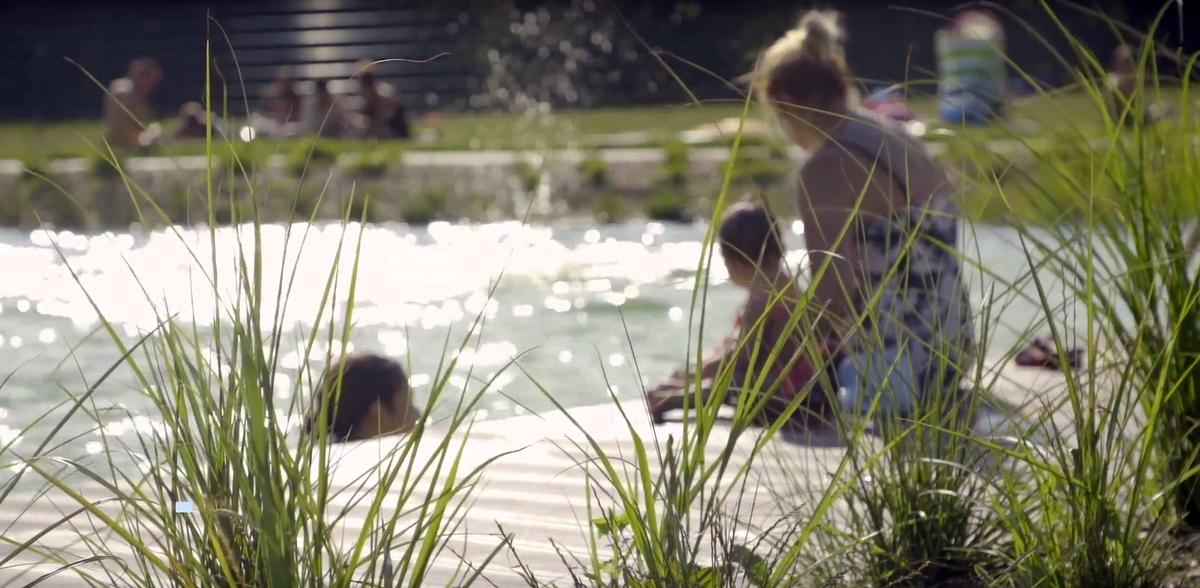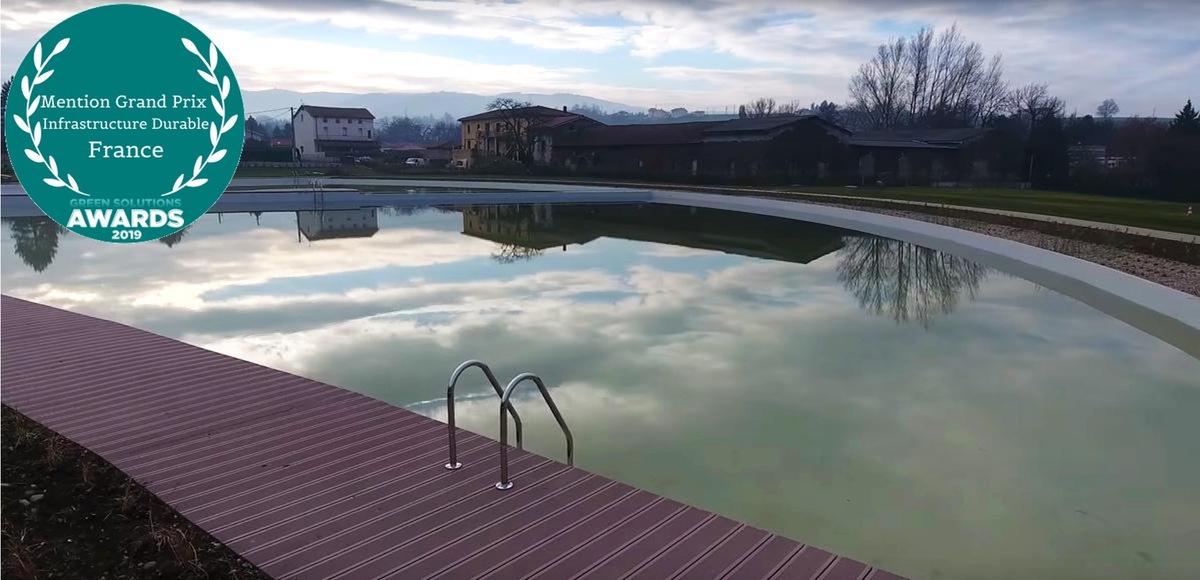Parc des Blondières and natural bathing of Loreto
Last modified by the author on 11/05/2020 - 11:20
- Year of commitment : 2018
- Address 1 - street : 24 RUE LES BLONDIèRES, 42420 LORETTE, France
- Diameter : 2000
- Water cycle : Collection, Containment, Capture, Foreshore restauration, Phytoremediation
- Biodiversity & Ecosystems : / Green and blue corridor, Buffer zone, Ecoystem restauration, Carbon capture, Environment education, Eco-tourism /
-
3 500 000 €
The project was reasoned as a "heart transplant" to operate in the site of Blondières so as to strengthen the various living places without disturbing them, even if only during the work. Bring more to existing living spaces without interfering with their current or future living space. Open new perspectives and treat the most neglected spaces. The choice of strong geometric shapes has become essential. It seemed totally inappropriate to make "pseudo-natural" forms of wild ponds near fishing ponds that already had good readability and appropriation by the locals. The second objective and one of the strong wills of the municipality of Lorette consisted in the valorization of the water surface, in particular that of the river of Dorlay, which borders the park of Blondières. The third objective was the integration and landscaping of the park, which has automatically been imposed as a "completion" action for the development of the Blondières site. This issue was particularly important because of the location of the site, located at the entrance of the municipality of Loreto.
Progress Status
Delivered
Data Reliability
Self-declared
Funding Type
Public
Sustainable Development
- enhance a busy street that is in fact a "city entrance" of the town, and thus create a new staging for the entrance of the town, highlighting the lines of the great landscape;
- completely mask industrial buildings pending their release;
- create an attractive point from which walkers can discover views overlooking all the wetlands and swimming, thanks to the use of geometric lines and the assertion of the plan-masse perfectly assuming the artificial side of this park and bathing which is the heart.
Governance
- the youngest children around the playground and the playground during school holidays;
- teenagers around the college / Grand-Croix High School and stadium;
- the older ones around the water;
- families around allotment gardens and Sunday walks.
Mayor of Loreto
Local Authority
Construction Industry
It is a natural bath open to all with paid access.
The site Blondières benefits from the proximity of large facilities that encourage the site's attendance because they are near the immediate vicinity of the project.
This park attracts locals of all ages:
The development of the site keeps these multiple uses and this mixture of generations and populations around the Summer Bathing Water Plan.
We wanted the natural swimming to benefit the greatest number, and therefore to offer the cheapest possible entry fees. That's why this bathing system using filtered river water and not drinking water immediately seemed to be the most suitable solution, both ecologically and economically. Indeed, the use of drinking water like most natural bathing would have generated higher operating costs and therefore more prohibitive entry fees.
Sustainable Solutions
- Quality of life :
- Economic development :
- Biodiversity :
- Energy/climate :
- Water management
- Management of natural areas
- Climate adaptation

Filter gardens
The water of the river flows through an innovative system of filter gardens to be treated before being used in bathing waters. These filtering gardens are positioned between the river and the new body of water and thus constitute an extension of the wetlands of the site.
One of the most interesting points from an ecological point of view is that the bathing water is refiltered by the filtering gardens and then reinjected into the river with an ecological quality superior to the water taken from the river.
Thus, it is the first natural bath that also acts as an ecological support for a natural wetland
Reasons for participating in the competition(s)
The development of the Parc des Blondières is a very important issue on the scale of the municipal territory because it involved creating a new public facility structuring more than 10 ha around the Dorlay River and its wetlands and at the entrance to the commune of Lorette. In order for the site to be as attractive as possible and to find its pivotal place in the urban planning of the district, access to the site has been completely redesigned. We decided to create a real network of pedestrian links between all the remarkable points of the Blondières site and to create links between the site and its context, particularly the river that runs alongside the park.Building candidate in the category

Grand Prix Infrastructure Durable












